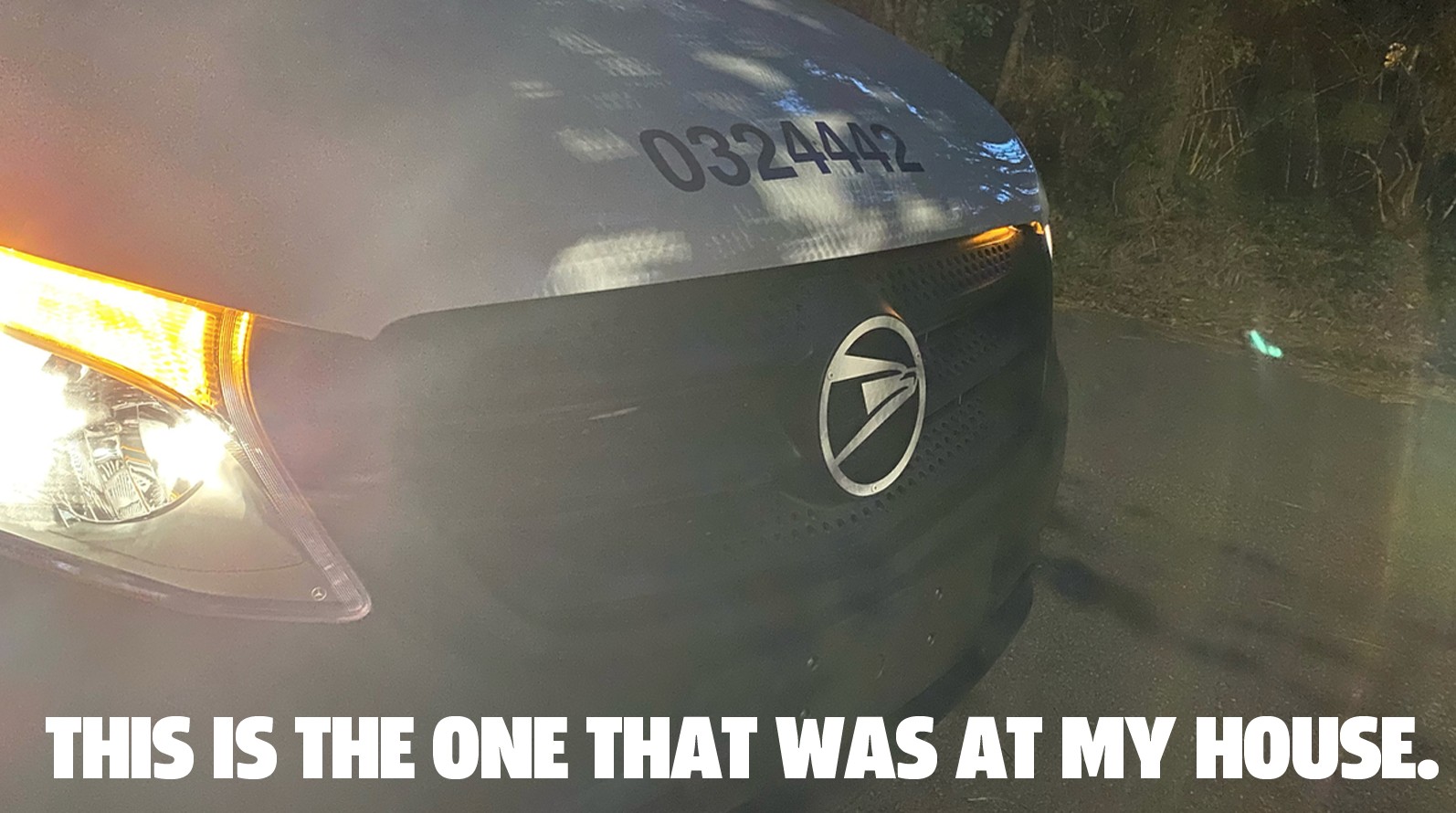The United States Postal Service (USPS) is in the process of modernizing its aging fleet, and while we eagerly await the arrival of fully electric vehicles, some interesting interim solutions have emerged. Among these are the Mercedes-Benz Metris vans, now sporting the familiar USPS livery. As a dedicated follower of all things automotive, especially work vehicles, I couldn’t help but notice something peculiar on these new USPS trucks. The iconic Mercedes-Benz tri-pointed star badge on the grille was gone, replaced by the proud eagle emblem of the Postal Service. Why the swap? It’s a question that led me down a rabbit hole of postal service branding, public perception, and perhaps a little bit of good old-fashioned American sentiment.
Seeking answers, I did what any curious car enthusiast would do: I asked my mail carrier. Luckily, he was overseeing a trainee driving one of these new Mercedes Metris vans. From his vantage point in the classic Grumman Long Life Vehicle (LLV), the soon-to-be-retired workhorse of the USPS, he offered a surprisingly straightforward explanation. “They decided to take off the Mercedes badge because they were afraid that people would see that and think we were spending too much money.”
The “they,” in this case, refers to the higher echelons of the Postal Service. And honestly, it makes a lot of sense. In the American automotive landscape, Mercedes-Benz is almost universally associated with luxury. While the German automaker produces a wide range of commercial and utility vehicles globally, the luxury image is what sticks in the US market. Given the constant public and political scrutiny on USPS finances, the concern about appearing extravagant is understandable. However, it’s worth remembering the incredible value the USPS provides. For a mere 55 cents, a first-class letter can travel across the country. Try getting anyone else to deliver a letter even a short distance for that price.
Intrigued, I wanted to verify if this perception-based rationale was the actual reason behind the badge change. Aesthetically, the eagle badge is arguably a strong and fitting symbol for the USPS, perhaps even more so than the Mercedes star in this context. Seeking an official answer, I contacted the Postal Service and received a formal statement:
“It is common practice to remove manufacturer’s nameplates as part of the upfit process. The Postal Service does not endorse any vehicle manufacturer or advertise on a manufacturer’s behalf. As part of our decal package we chose to use the USPS trademark eagle symbol instead of the vehicle manufacturer’s symbol. All decal markings are installed as part of the vehicle acquisition contract.”
While this official statement mentions standard practice and avoiding endorsement, it sidesteps the underlying motivation for this particular badge swap. The claim of routinely removing manufacturer nameplates doesn’t entirely hold up when considering USPS history. Take, for instance, the iconic Jeep DJ Dispatcher, the beloved “Postal Jeep” of the 70s and 80s.
This official 1970 USPS photo clearly shows prominent “JEEP” branding on the rear door. The Grumman LLVs, purpose-built for the USPS, never had external branding, making them a different case altogether.
Perhaps the “no manufacturer branding” rule is a recent development? Not necessarily. The USPS has also incorporated Ram Promaster vans into its fleet in recent years, and these vans proudly display the Ram logo. The evidence suggests that the USPS isn’t consistently removing manufacturer badges across all new USPS trucks.
Therefore, returning to the initial question, the mail carrier’s explanation about public perception seems increasingly plausible. The USPS likely opted to replace the Mercedes badge to proactively avoid any potential public outcry about perceived wasteful spending on “luxury” vehicles. It’s a preemptive measure to manage public image, and in that sense, a rather shrewd decision.
Imagine the hypothetical headlines: “Taxpayer Dollars Fund Fancy Mercedes Mail Trucks!” Despite the fact that these Mercedes-Benz Metris vans are practical utility vehicles, assembled in Mercedes’ Charleston, South Carolina factory – partly to navigate the “Chicken Tax” – and far from opulent, the Mercedes name carries a certain connotation in the US.
Ultimately, while the USPS might not explicitly admit the public perception strategy, the badge swap is a smart move. It adds a distinct USPS visual identifier to these new trucks and preempts potential criticism rooted in misunderstanding. Anyone with automotive knowledge recognizes these are capable utility vans, perfectly suited for postal service duties, regardless of the badge on the grille.
